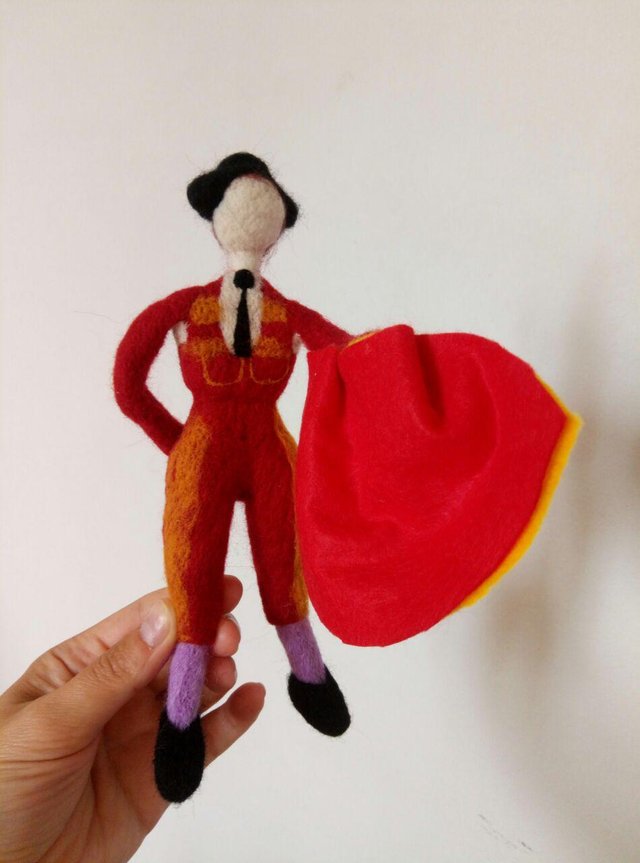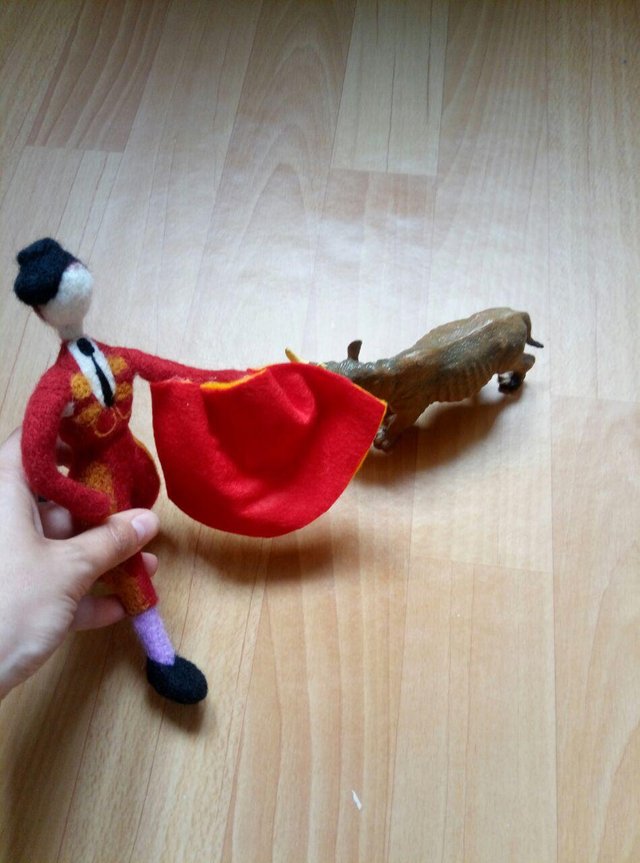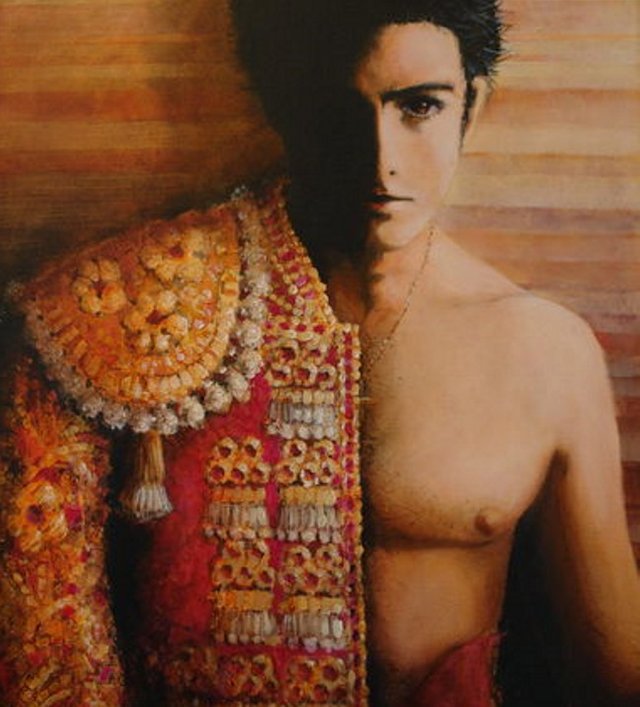
The bullfighters go to battle with a bull in a suit called **"trache de luces" ** which translates as "brilliant clothes".
To create a costume for a bullfighter takes up to five months of work. From the idea of design, selection of materials, fabrics, ornaments to the embodiment. From the first to the last fitting - forty days. 40-50 people are engaged in creating a costume for a bullfighter, I'm not afraid of this word, in my opinion, toreador's costume is a masterpiece, the work of tailor's art.
!!! Full bullfighting costume - from head to foot - weighs six kilograms.
The bullfighter comes forward with a fighting bull, as if he was going to the royal reception in a palace. With his costume, he demonstrates the highest respect for a noble rival.
Each costume of a bullfighter is an encrypted message. Everything in it is a secret code, a color, a pattern, as is the ligature of gold and silver embroideries, semiprecious stones.
Only two people know the secret code of a toreador costume: the maestro who creates it and the one for whom it is created. Toreros, matadors are people with very uneasy destinies, with unique, strong and hard characters.
The toreador's vestments are so numerous and they are so hard to put on, that the bullfighter wears an hour or two. And their assistants help them.
On the head of the bullfighter montera - astrakhan cap with ears. Montera weighs a lot - a kilogram.
The Spanish proverb ponerse el mundo por montera (literally "to appear before the world in a toreador's cap") means nothing but go "on you", despite the dangers, difficulties and not listening to advice from the side. In the last act of bullfight, when there is a decisive battle - who is who, the bullfighter goes without a hat. He takes off his cap before the opponent.
Another necessary detail on the head is a pigtail.
Today's bullfighters are not long-haired, do not collect hair on the nape of the neck as a protection chignon, but the pigtail is a tribute to the old days. Every bullfighter has a pigtail.
There is such a Spanish proverb directly related to the pigtail cortarse la coleta ("trim the pigtail"). When a bullfighter cuts a pigtail, he declares that he leaves the bullfight for good. Cortarse la coleta - means "to go on a well-deserved rest".

The next part of the toreador's vestment chaquetilla is a short thick jacket (more precisely, a jacket) with shoulder straps sewn on top and with armpit slots in order not to interfere with the movements of the hands. It is decorated with tassels of gold and silver. From the shoulders also hanging tassels.
Under the camisole (jacket) is a waistcoat chaleco. The same unbending, very firm, quilted with a special corset cloth. And a shirt, always white. And necessarily from the batiste, from the finest silk.
Alamares are chest decorations and hombreras are shoulder decorations.
The waist of the torero (toreador) is surrounded by a fajin - a wide multi-meter belt, which also forms a kind of corset. Corbatín is a tie.
Taleguilla are so-called toreador's pants. They are narrow, on suspenders, reach the ankles. Below, at the ankles pants are tied with special laces with suspenders, at the end of which there are also brushes. Here this part of the trouser trousers - laces with tassels, with which the trousers are finally fitted to the ankle, are called machos.
And the Spanish proverb" atarse los machos " means "tie the shoelaces on the ankles, prepare to face the danger." How do the bullfighters, dressing before the battle with the bull and praying to the Virgin Mary.
Medias - in Spanish mean (long) stockings, knee socks. Stockings of the bullfighter reach the knees. And they are always pink.
Zapatillas are toreador shoes, they are also called "manoletinas" (manoletinas).
The last four attributes of the apparel of the bullfighters. They do not dress, but are carried in their hands.
1 Capote de paseo is a ceremonial cloak. This is one of the most luxurious pieces of the toreador's attire, with which he leaves before the battle in the arena in the opening ceremony of the bullfight.
2 But just capote ( capote de brega combat cloak) is a heavy cloak, pink on one side, yellow on the other. With a capote, the bullfighter works in the arena, luring the bull.
3And finally, the smallest, blood-colored cloak -** muleta**. This cloak is deadly. With this muleta and 4 with the estoque, the last action takes place. Estoque is a sharp metal spear that is poked into bulls body and kills a bull during a bullfight. Bent part of estoque is called "muerte" - death in Spanish. By the way, with the attribute - the toreador cloak of the cape is also connected another Spanish proverb -"echar un capote" - "stretch out the cloak". It means - extend a helping hand, as do the assistants of the bullfighter. There are times when a bull overturns a bullfighter and starts hitting him with horns. And then the helpers of the matador with their capes, the hood, begin to distract the bull's attention so that he rushes to another cloak, on the other hood, and the life of the bullfighter was saved.
Toreador suits for foot warriors and for horse bullfights. For the horse bullfight serve other vestments, called goyesca, as Goya painted them. Horse toreadors have lighter uniform, for example a white silk shirt and suede vest, narrow suede pants and black Zapatillas.

Source http://www.portalostranah.ru
P.S. It is my toreador (torero, matador). I have never been to Spain, but one day. i'll visit this incredible country.
Making my torero i was inspired by Ernest Hemingway's stories and Madonna's video "Take a bow".